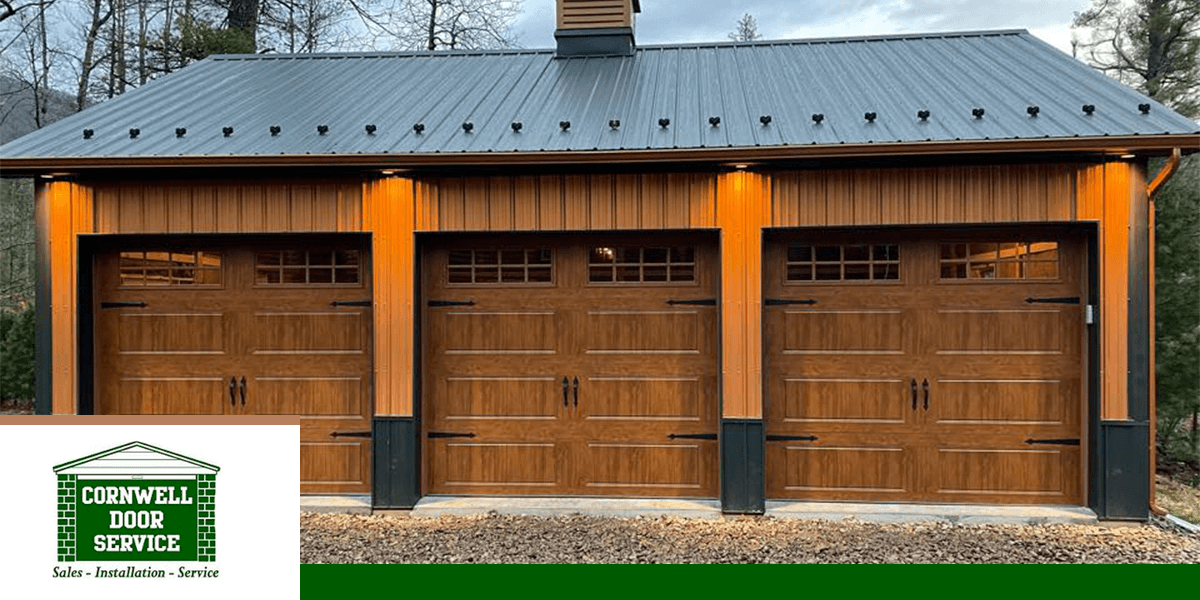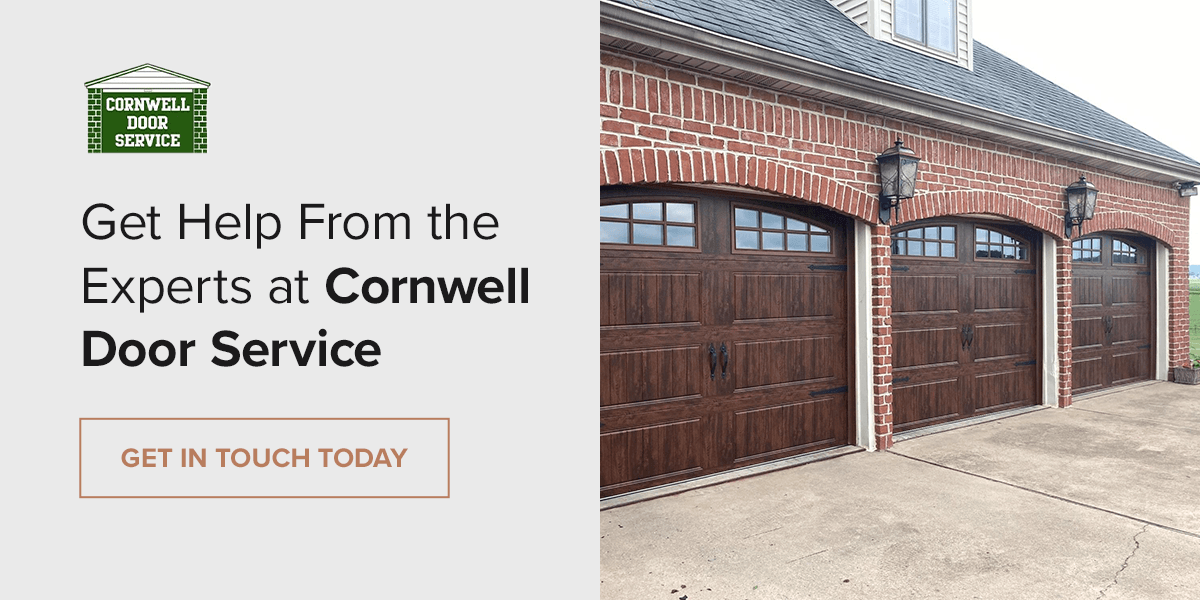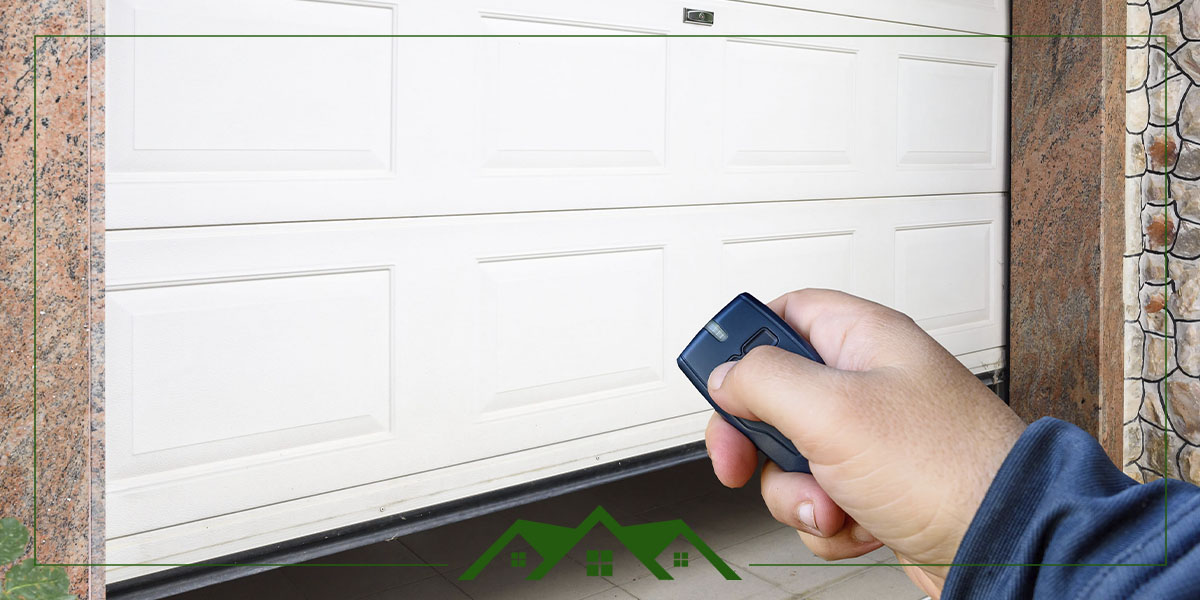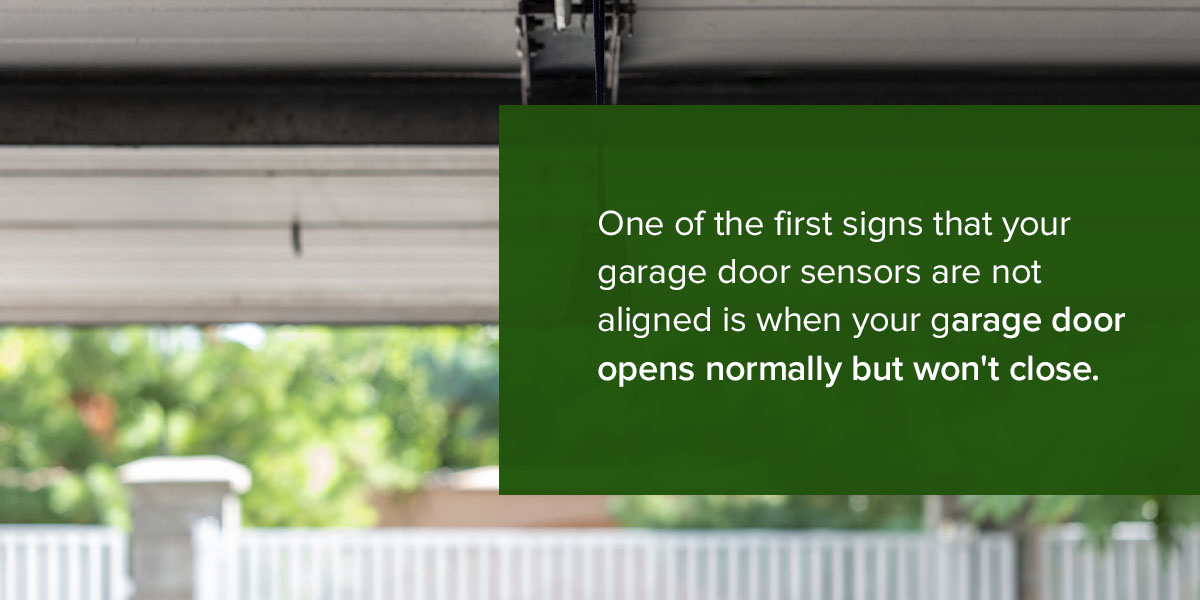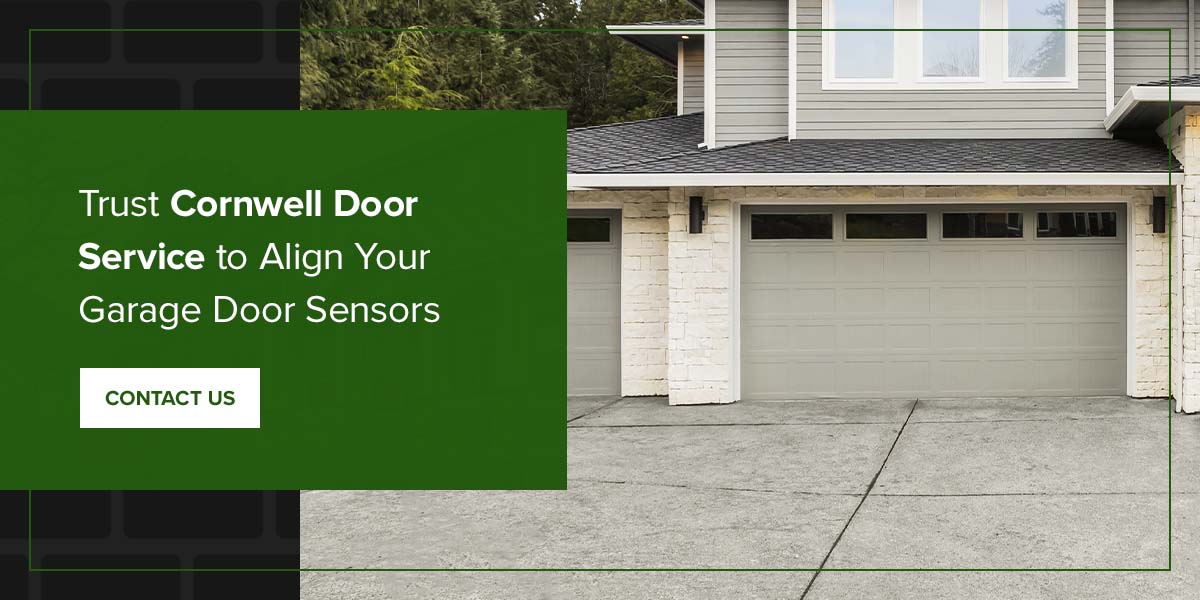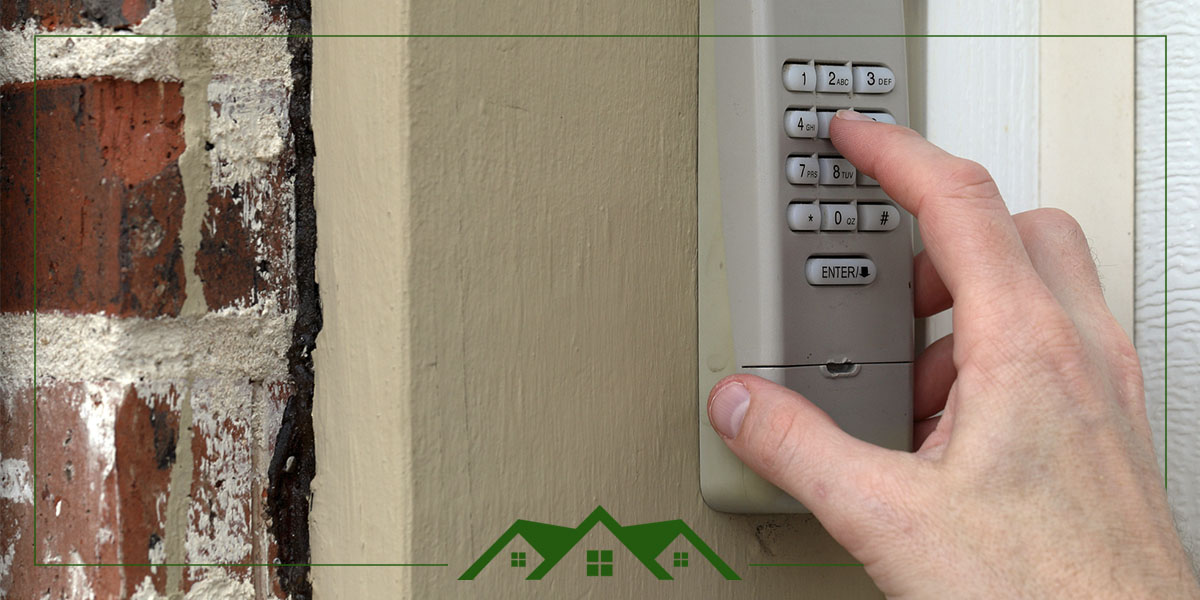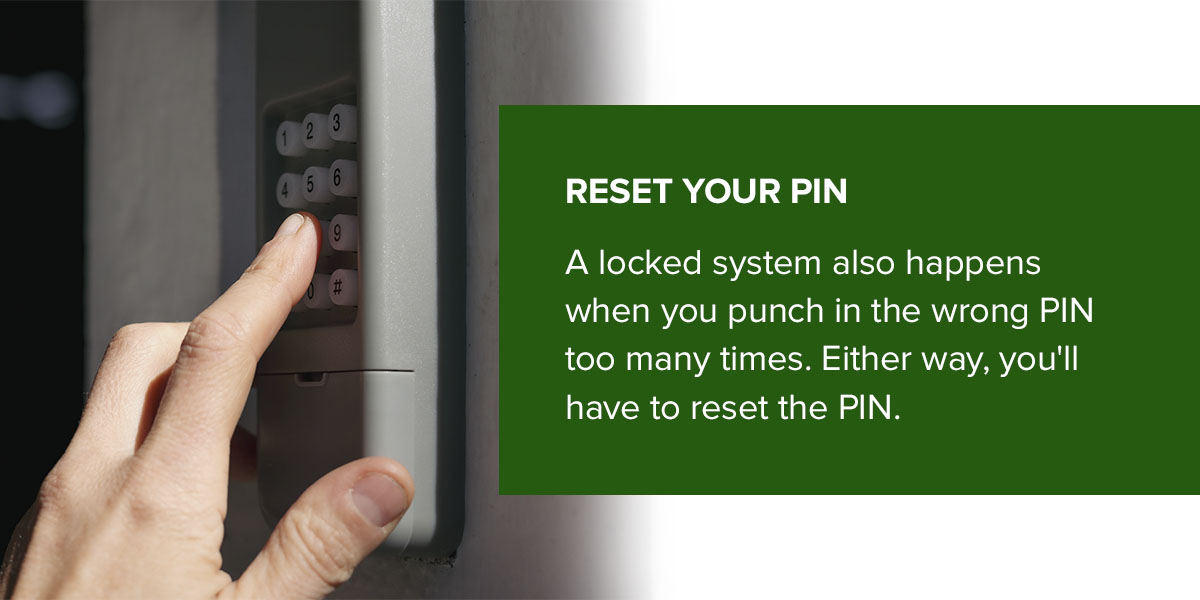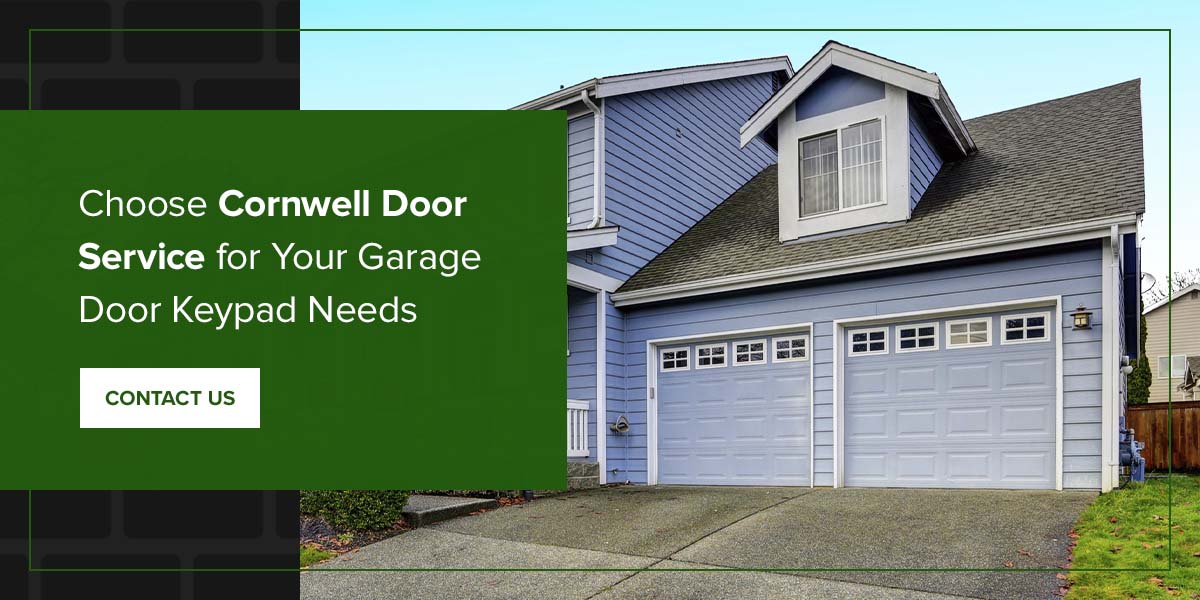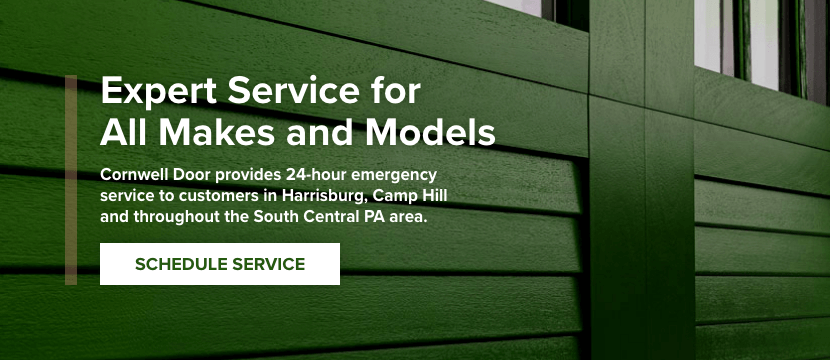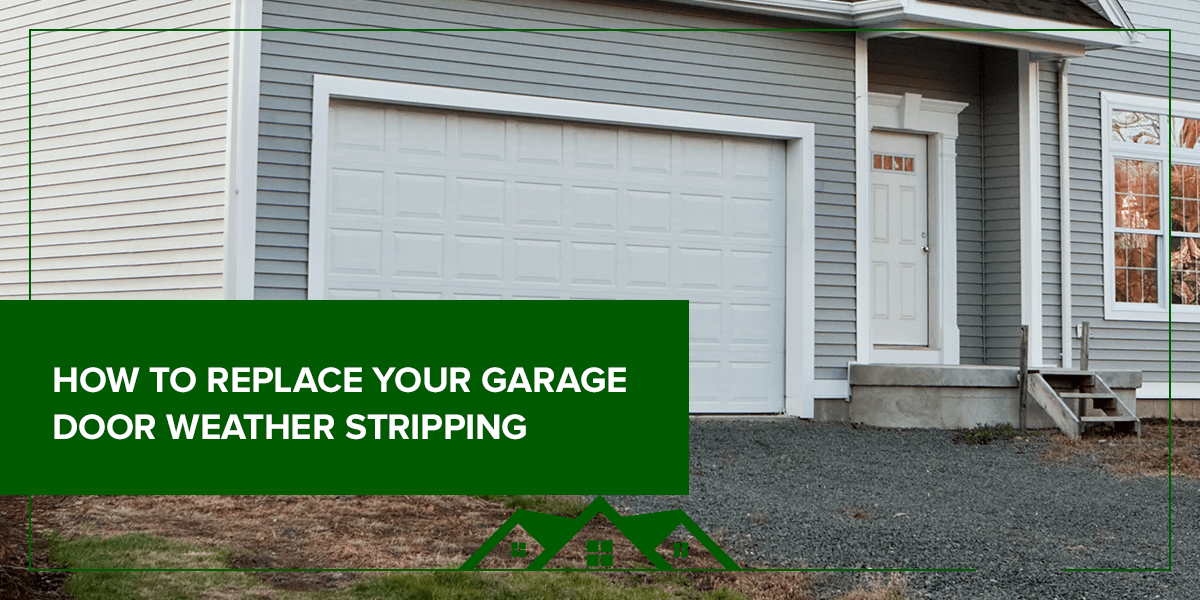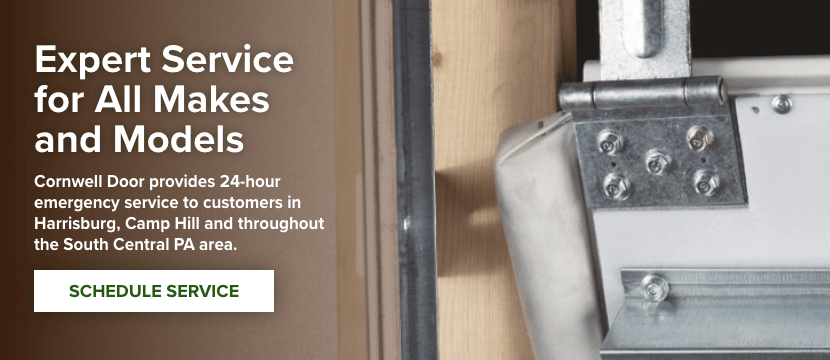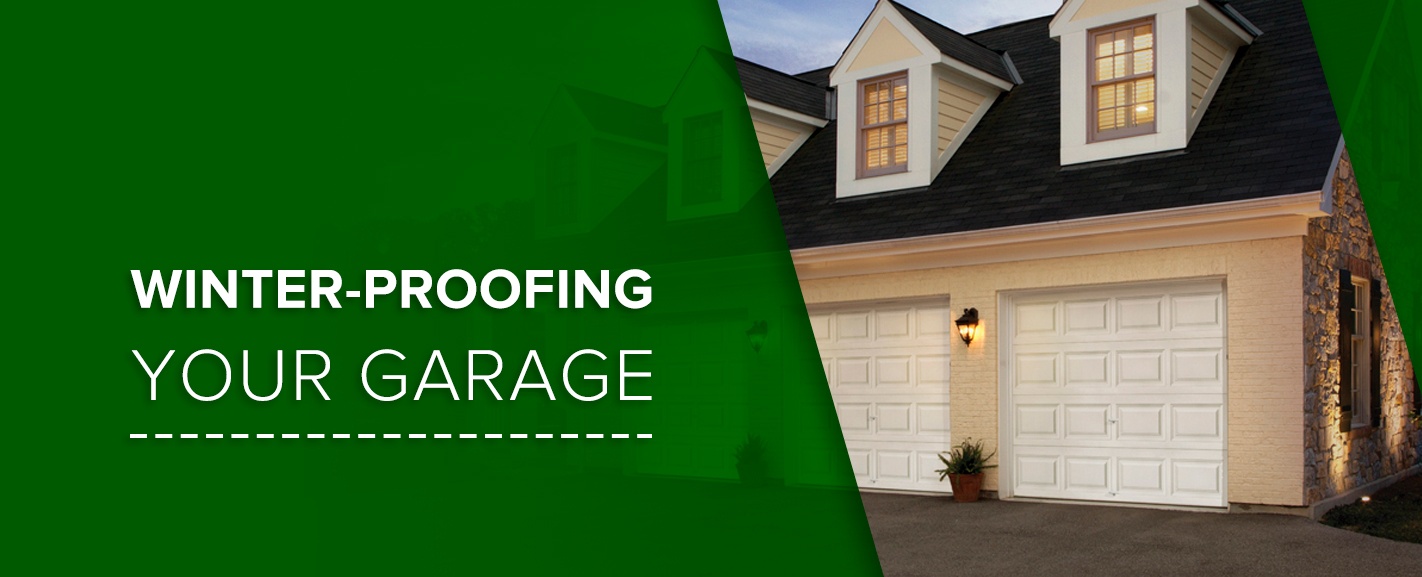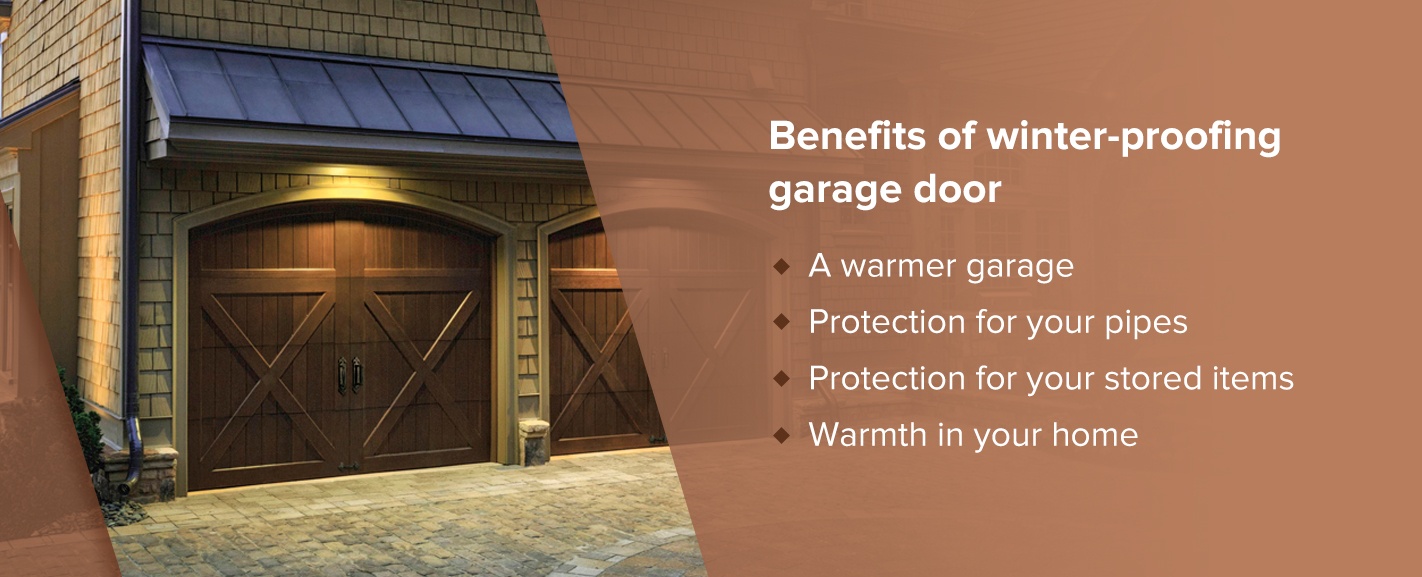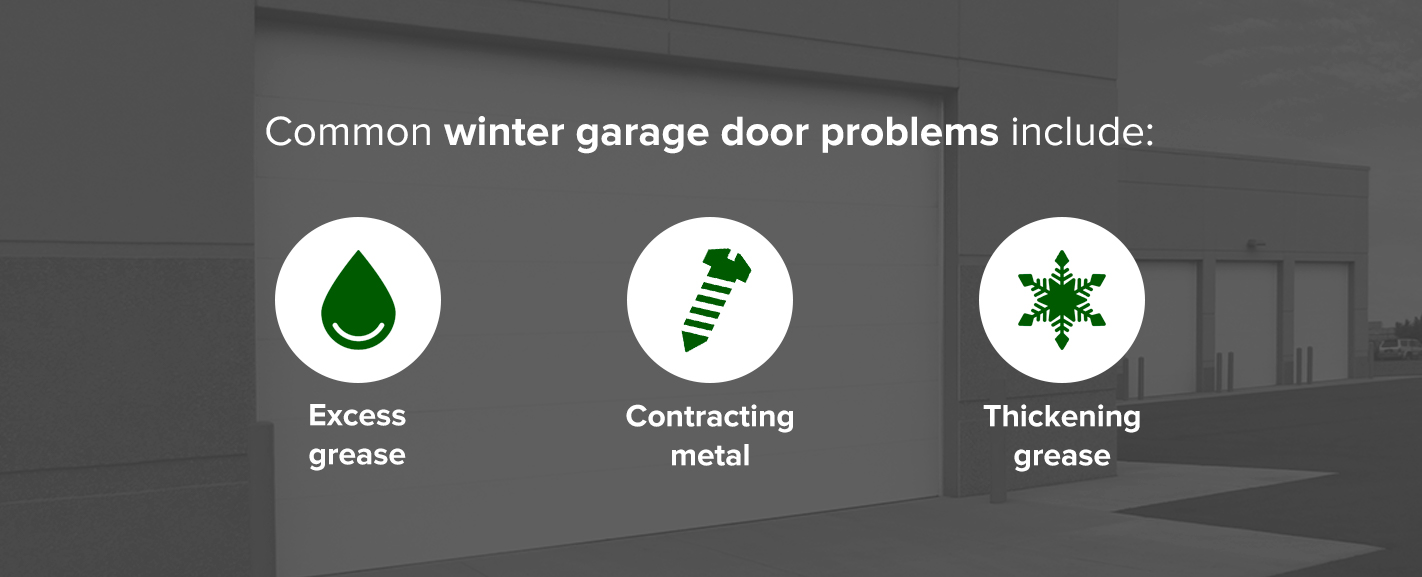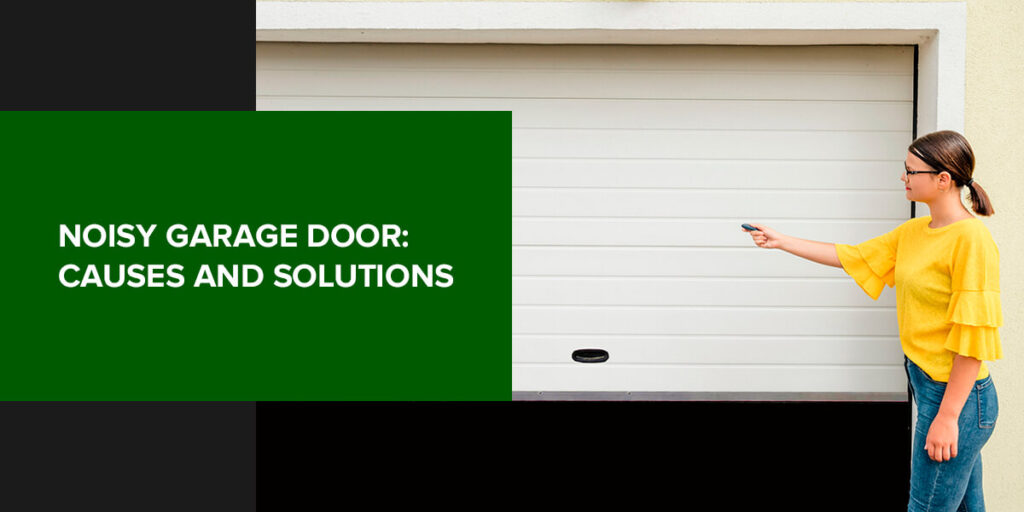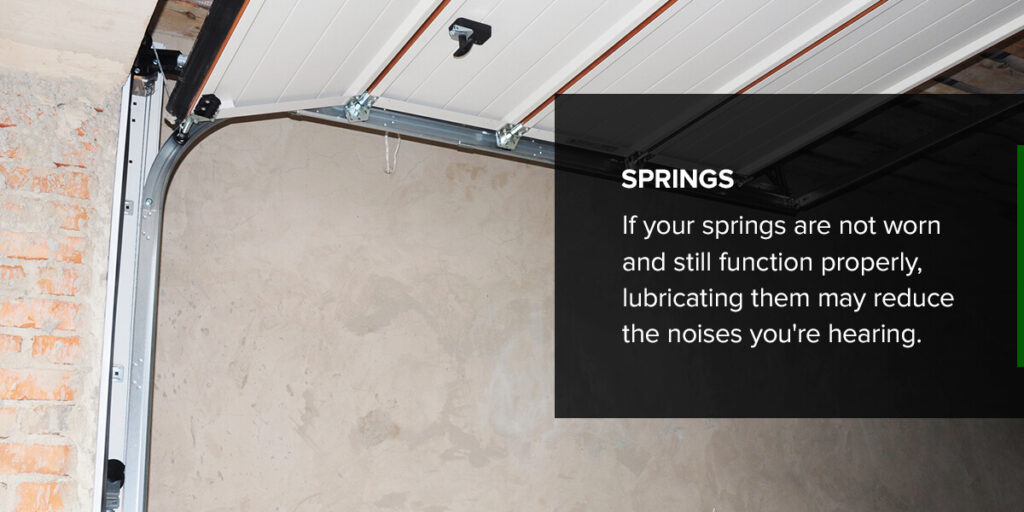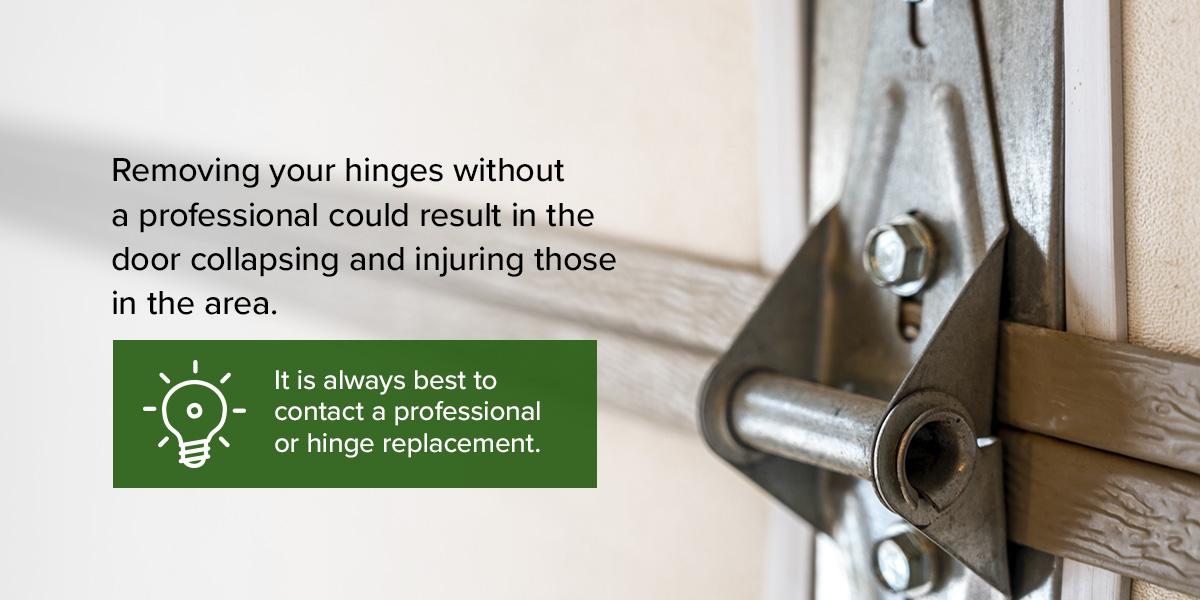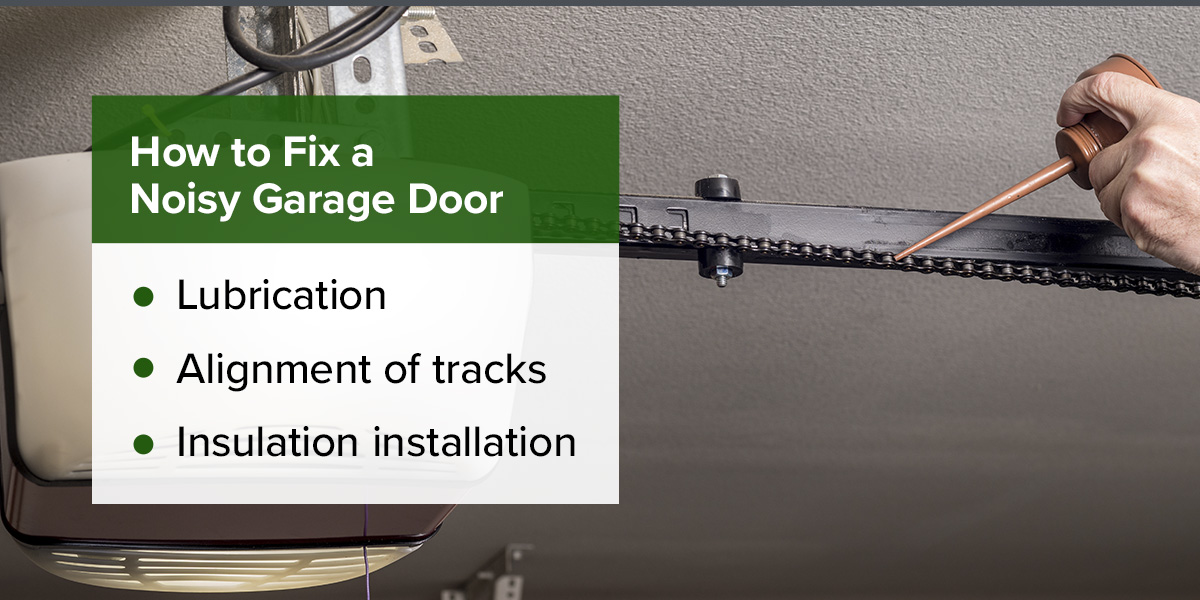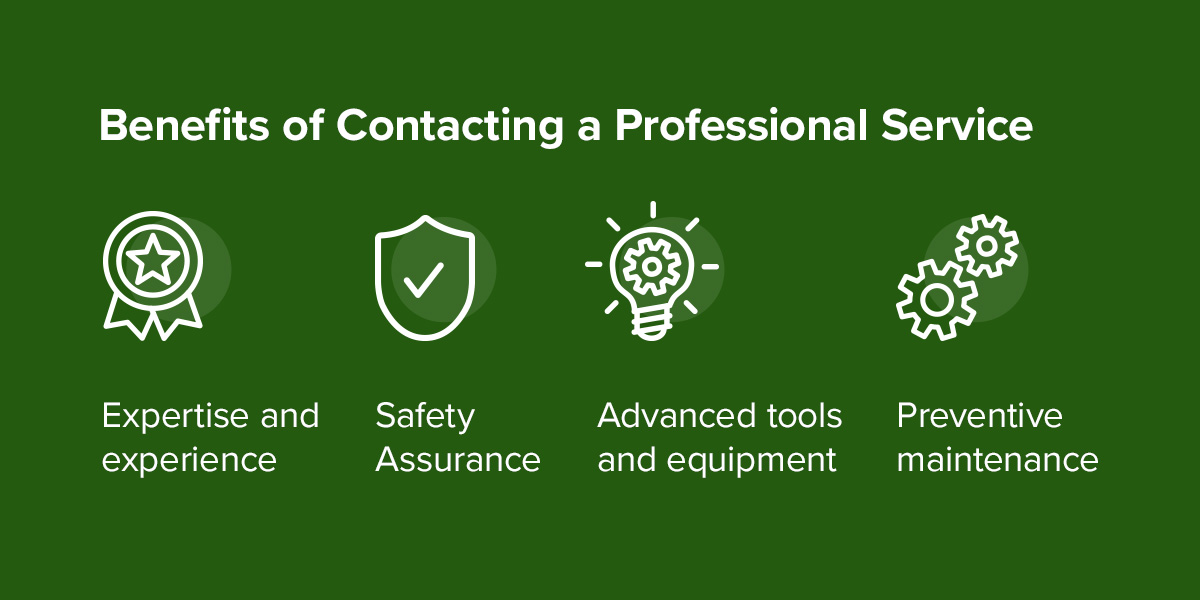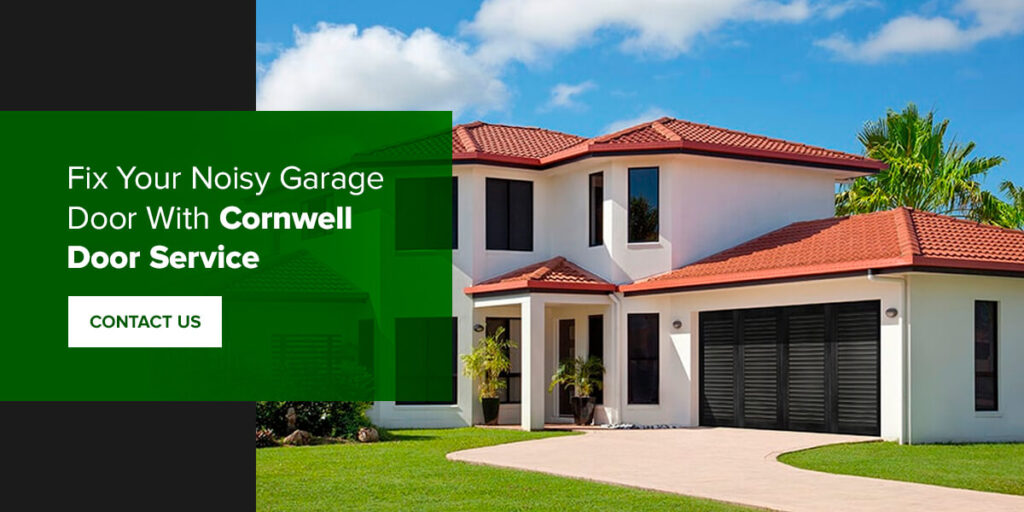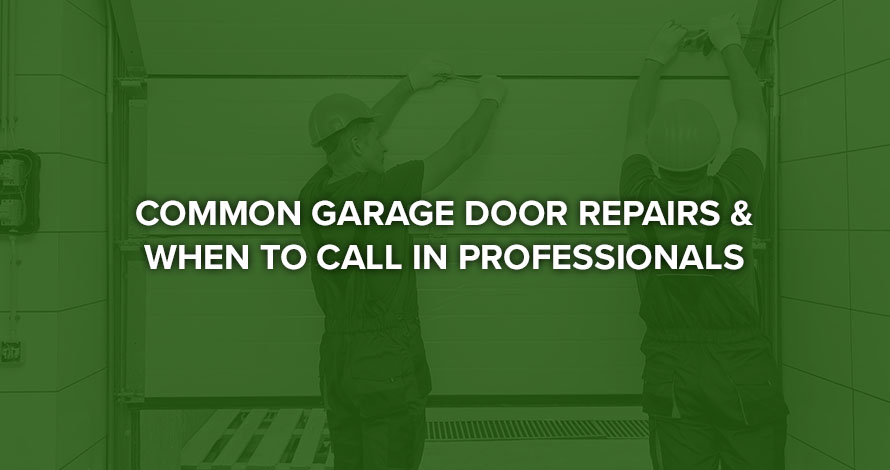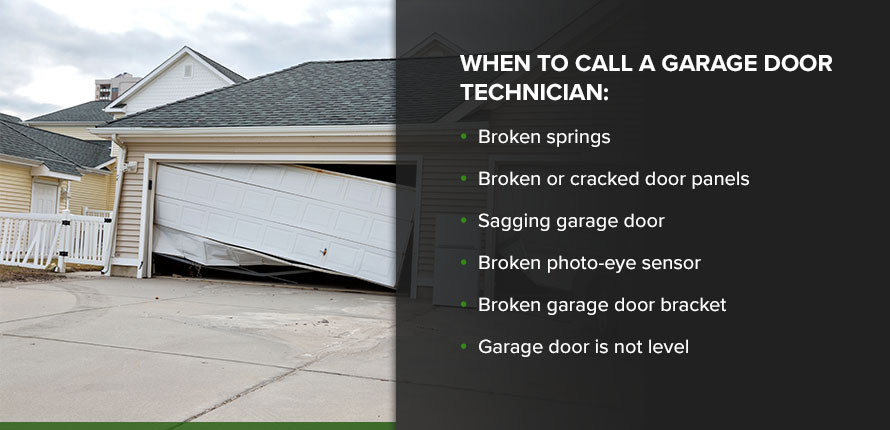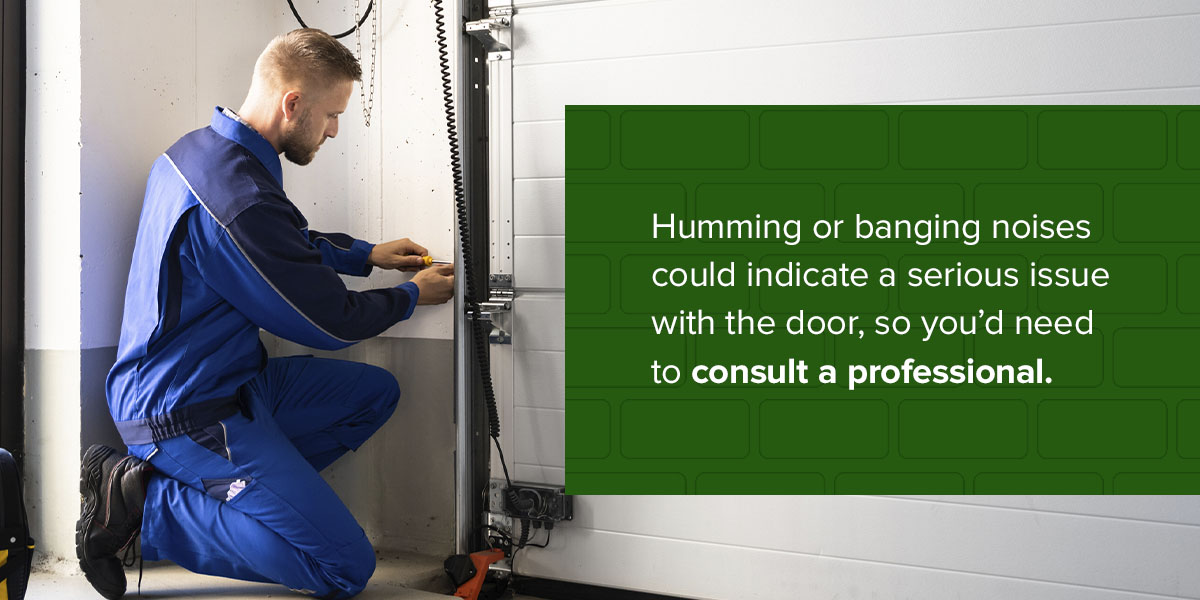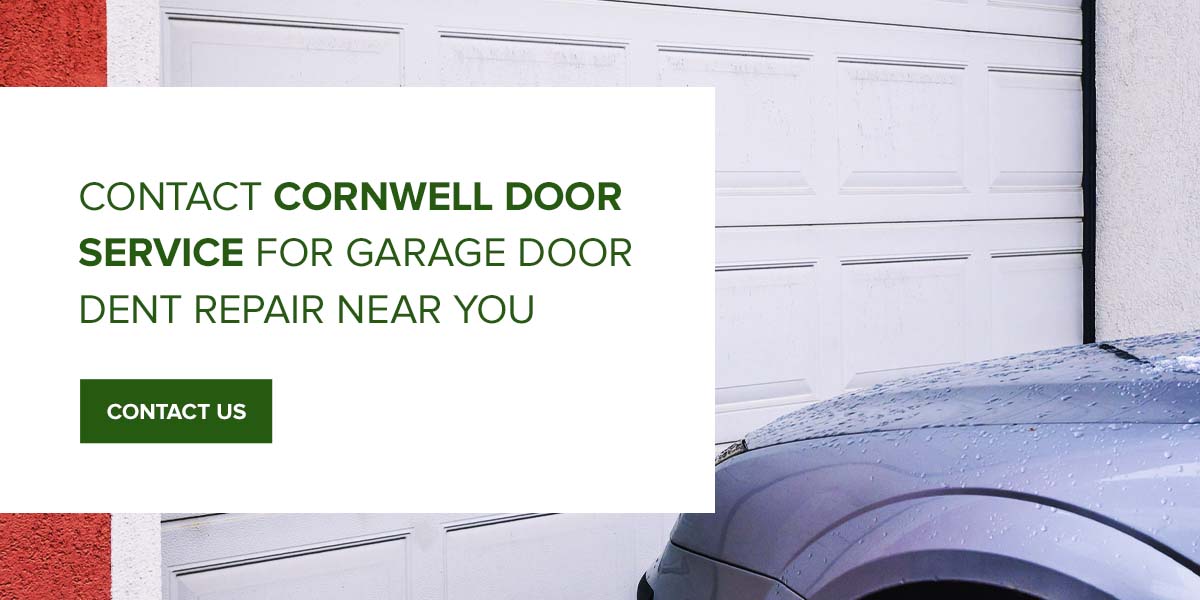How to Program Your Garage Door Opener
Programming your garage door opener can seem challenging, but it becomes a straightforward process with the proper guidance and information. Discover how to program your Liftmaster garage door opener with easy-to-follow steps. Whether setting up a new system or reprogramming an existing one, this guide will help you get your garage door working smoothly in no time.
What You Need to Program Your Garage Door Opener
You’ll need to gather a few essential items to program a garage door opener like the Liftmaster. Ensure you have a sturdy ladder and potentially someone to steady it so you can safely reach the opener, which is typically mounted on the ceiling. You’ll also need the remote control and access to the keypad you plan to program.
Having the user manual for your specific Liftmaster model on hand is also beneficial, as it contains useful information, detailed instructions and troubleshooting tips. If your garage is dimly lit or you are working at night, a flashlight will be helpful to see what you are doing.
With these items ready, you’ll be well-prepared to program your garage door opener efficiently and safely, especially after reading the guidelines below.
Programming Your Garage Door Opener and Remote
Liftmaster garage door opener programming is a straightforward process you can complete in just a few simple steps. These steps will guide you through each action, from locating the necessary buttons to testing your remote control.
1. Find the Learn Button
To program your garage door opener, the first step is to find the Learn button on the Liftmaster unit. You can typically find this button near the antenna wire on the side or rear of the motor unit. The unit’s light lens or a small panel will likely cover it. Depending on the model, the Learn button can be in various colors, such as red, orange, yellow, purple or green.
2. Press the Learn Button
Once you have located the Learn button, press and release it. Doing this will activate the programming mode. An indicator light will turn on or start blinking, signaling the unit is ready to receive a new code. Move on to the next step within 30 seconds after having pressed it to ensure the programming mode remains active. Otherwise, you will need to start the process over.
3. Program the Remote Control
With the Learn button activated, take your remote control and press the button you would like to program. Keep the button held down until the motor unit’s indicator light blinks or turns off, usually taking a few seconds. This indicates that you have successfully paired the remote control with the garage door opener.
4. Test Remote Control Functions
Once you have programmed the remote, it is essential to test it to be sure it works correctly. Be sure to stand away from the garage door and press the button you have programmed on the remote. Once pressed, the garage door should then begin opening or closing. If the door does not move, go through the steps to program it again to make sure the remote is paired correctly with the opener. If you’re unable to pair your remote and opener, Cornwell Door Service can help.
5. Repeat for Additional Remotes
If you want to program additional remotes, go through the steps above for each. Remember to press the Learn button on the motor unit before programming each new remote. This will allow you to open and close your garage door using multiple remotes, providing convenience and flexibility for all household members.
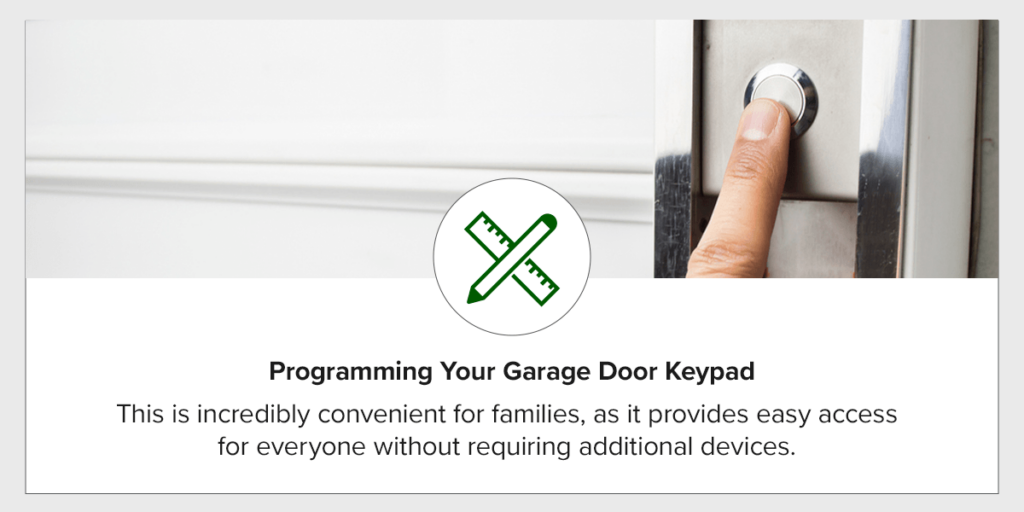
Programming Your Garage Door Keypad
Programming a garage door keypad allows you to open and close your garage door without needing a remote control. This is incredibly convenient for families, as it provides easy access for everyone without requiring additional devices. Below, we will guide you through the steps to program your keypad, ensuring it works seamlessly with your garage door opener.
1. Find the Learn Button on the Opener
To begin programming your garage door keypad, you must find the Learn button on your specific Liftmaster model. The Learn button is usually situated on the side or back of the motor unit and typically close to the opener’s antenna. It is generally colored red, orange, green, purple or yellow — this variation depends on your specific Liftmaster model.
2. Enter Your Desired PIN
Once you have found the Learn button, press and release it to activate the garage door’s programming mode. This is indicated by a blinking indicator light. On the keypad, enter the four-digit PIN you want to use, then press and hold down the Enter button until the indicator light on the garage motor unit blinks or turns off. This confirms that your PIN has been successfully programmed. Choose a PIN that is easy to remember but difficult for others to guess — avoid using your street number or something similar.
3. Test the Keypad
Once you have programmed the keypad, testing it to make sure it works correctly is crucial. Ensure you are out of the way of the garage door and enter your PIN into the keypad, followed by the Enter button. The garage door should then respond by either opening or closing. If it does not react, redo the programming steps to ensure the keypad is paired correctly with the opener. Consult your Liftmaster manual for specific troubleshooting tips, or contact the team at Cornwell Door Service for help.
4. Reprogramming or Changing the PIN
If you need to reprogram or change your PIN anytime, you can do so by following the same steps. Simply press the Learn button on the motor unit to enter programming mode, then enter your new PIN on the keypad, followed by the Enter button. This will overwrite the previous PIN and set the new one. Regularly updating your PIN can enhance the security of your garage door system — just remember to let everyone in your home know about the PIN change.
Get Help From the Experts at Cornwell Door Service
If you encounter any issues programming a garage door opener or keypad or have other issues with your garage door, don’t hesitate to contact the professionals at Cornwell Door Service. Our experienced technicians are ready to assist you with any garage door needs, ensuring your system operates smoothly and securely. Be sure to schedule a service appointment today or call us at 844-822-0440 with any garage door-related queries.
Trust Cornwell Door Service for reliable, expert solutions to keep your garage door in top condition. We are here to help you.
How to Align Your Garage Door Sensors
Your garage door sensors are essential in keeping everyone at your home safe. As a homeowner, you need to know what automatic garage door sensors are and how to tell if they do not align. Aligning your garage sensors takes some practice. Following a step-by-step plan can streamline the process and help keep your cars and family safe.
What Are Garage Door Sensors?
Garage door sensors work by sensing if an object crosses their path. If they detect anything, such as a car, person, pet or toy, in the way as the door closes, the system reopens the door. The sensors work by using two photo-eyes, which emit an infrared line across the garage’s horizontal opening a few inches off the ground. One photo-eye transmits information, and the other photo-eye receives information.
These two sensors must work well together and should be free from fault. Properly working sensors help prevent car damage and bodily injury and are required by U.S. law.
How to Tell If Your Garage Door Sensors Are Not Aligned
Your garage door will show signs of malfunctioning when it closes and opens in unusual ways. You may also need to exit your vehicle to open and close your garage. Look for signs of door malfunctions and other indicators around the mechanical workings of your garage doors:
- Garage door stays open: One of the first signs that your garage door sensors are not aligned is when your garage door opens normally but won’t close. If the sensors are misaligned, the door might incorrectly sense an object in the way.
- The garage door closes despite an obstruction: Your garage door may have closed despite an obstruction crossing the sensor line. Early detection can help prevent this from happening.
- Dirty lenses: The infrared sensors should have a clear pathway to send messages to each other. Dirty lenses can make your sensors behave as though they are misaligned.
- Damaged wires: Damaged wires can cause your sensors not to align correctly. If left untreated, it can cause the alignment function in your garage doors to stop working.
- Red light indicators: When you press the button on your garage remote, check the color of the flashing light. A green light means the sensor is working, and a red light means it’s faulty.
Aligning Your Garage Door Sensors
For your garage door sensors to work correctly, one sensor must be able to send information to the opposite sensor. Typically, the emitter shows a green light, and the receiver confirms that information by flashing a yellow light. Anything other than that means you should adjust your garage door sensors. To align them, follow this step-by-step process:
1. Turn off the Sensors by Disconnecting the Power Supply to Your Garage
You shouldn’t need to work with live electricity, but turning the power off to your garage and pulling out the plug for your automatic door opener is always advisable. You can find the fuse that feeds your garage in your home’s breaker box. For added safety, wear electricity-resistant gloves.
2. Loosen the Screws Holding the Sensors in Place
Loosen the screws in the mounting brackets. However, you don’t want to loosen them entirely and remove the screws. Instead, unscrew them in a counter-clockwise direction until they’re loose enough that you can move the sensors. Test this by sliding the mounting brackets up and down. They should slide with ease.
3. Slide Each Garage Door Sensor Down
Slide each of the garage sensors down, one by one, as low as they can go without the screws coming loose. Do this with your bare hands, not a wrench. Using tools may cause damage and possible malfunctioning to your sensors.
4. Attach a String Between the Sensors
Once the sensors and the mounting brackets are as low as possible, get a string several inches longer than the width of your garage opening. Tie one end of the string to one sensor and mounting bracket as firmly as you can. Then, stretch the string across your garage to the opposite sensor and tie the other end to the opposite sensor.
5. Ensure the String Lays Level
Set a level underneath the string and ensure it runs evenly. If it doesn’t, rearrange the mounting brackets so the string is level from one end of the garage door to the other.
6. Tighten the Screws in Place
Once you’ve determined that the line is level and even, tighten the screws in the brackets. Test that they’re tight enough by moving the garage door sensors out of place. If they don’t move, the screws are tight enough. If they do, level the string of the sensors once more and screw them tight again. Use the level again to line up your garage door sensors to the string.
7. Remove the String and Reconnect the Power
Remove the string when you’ve confirmed that the sensors align evenly. Repower your garage and test the sensors again. Your garage door should now be fully operational after you’ve aligned the sensors.
One thing to keep in mind when you’re aligning your sensors is the leveling factor. It’s vital that the leveling remains straight. The infrared line between the sensors must be able to send and receive information in a straight line.
Trust Cornwell Door Service to Align Your Garage Door Sensors
Correct garage door sensor alignment is essential for improved convenience, helps prevent vehicle damage and protects people. Functional sensors can give you peace of mind that you are always safe when you enter or exit your garage.
Aligning your garage sensors can be time-consuming, especially if you do it on your own. There are also some safety risks to remember as you switch off the main switch. If you need help diagnosing your garage door sensors or aligning them, consult a garage door expert. Taking care of your garage door is one of the best things you can do for your property and safety.
Cornwell Door Service has been in the garage door industry for over 40 years. Trust us as your partner in handling your garage door queries. Request a service with us today by filling out our online form. Alternatively, call us at (717) 273-9841, and one of our expert team members will help you further.
Garage Door Keypad Troubleshooting Guide
There are various possible explanations if your garage door keypad stops working. You may need to clean your keypad or replace the batteries. Troubleshoot your garage keypad until you find the best solution for your garage door.
A keypad is a handy tool, and keeping your garage keypad working well helps ensure streamlined trips to and from home. Place the efficacy of your garage door as your top priority as you navigate the possible solutions.
Possible Causes of Garage Door Keypad Not Working
Your garage door keypad is very useful, especially if you don’t have a remote. For this reason, ensuring that your garage door opener keeps working at its best will benefit your schedule and the function of your garage door. Here are some reasons why your garage door keypad may not be working:
- Keys stuck to the pads: The keys getting stuck to the pads are common. Dirt and debris trapped under the keys can cause them to stick to the pad.
- Issue with your PIN: Usually, you get or set a temporary PIN when you get your garage door keypad. Once the PIN expires, you should reprogram it with a new one. If your schedule is busy, you can easily forget to set a new PIN or punch in the wrong one. This can cause your system to lock.
- Dead keypad batteries: The problem may be dead batteries in your garage door keypad. Check if dead batteries are the culprit for why your keypad may not be working.
- Frayed wires: Frayed and poorly connected wires can lead to your keypad needing fixing. Sometimes, wear and tear due to outside elements can disconnect the cables from the keypad.
- A malfunctioning code: A malfunction can happen for various reasons. Often, a code needs resetting when you reboot the keypad, change the batteries or put in an incorrect PIN too many times. An older keypad may simply not recognize a PIN any longer.
- An old or worn-out keypad: Take note once your keypad looks battered by the elements. Check for locations where the casing may be loose or rain and moisture can penetrate. Such cracks and holes usually cause your keypad to malfunction. If you’ve tried different troubleshooting remedies but nothing seems to help, you may need a new keypad.
- Malfunctioning buttons: Check for malfunctioning buttons on your keypad by changing the code. Select a new four-digit PIN with completely new numbers not in your current code. If this works, there might be a poor connection between the buttons. Age, damage, dirt, and wear and tear may cause malfunctioning buttons.
How to Reset Your Garage Door Keypad
You can try several things to reset your garage door keypad if it’s not working correctly. Keep in mind that some solutions are more intricate than others. It’s best to get the help of a professional if you need clarification on how to reset a garage door keypad.
1. Clean the Keypad
A good cleaning can go a long way to keep your keypad working at its best. Clean your keypad on the outside with an alcohol-based solution to eliminate oil and debris. Wipe off any grime and dirt between the buttons, being careful not to cause any damage.
If you have a remote, first wipe the outside of the remote with a cleaner. Next, open up your remote. Brush out any debris and dust with a soft brush before removing the keypad from your remote, if possible. Clean the inside around the keys in your garage remote before replacing the keypad again. Finally, close up your garage remote.
2. Reset Your Pin
A garage door that won’t open from the outside but closes from the inside could mean an expired PIN. A locked system also happens when you punch in the wrong PIN too many times. Either way, you’ll have to reset the PIN. While every model is different, here are the basic steps for how to change the code on a garage door keypad:
- Your owner’s manual should have a four-digit unlocking code.
- When you enter this code, a light on your motor may blink.
- When you see the blinking, press the release button on the unit.
- You should now be able to reset your PIN according to the manufacturer’s instructions.
If you cannot locate your manual, the manufacturer’s website should also have instructions on resetting your PIN.
3. Replace the Keypad
Replacing the entire keypad is one way to reset a garage door keypad without a code. Even though a casing protects your garage door keypad, it can still be vulnerable to harsh elements and damage. Sometimes, it’s best to replace your keypad entirely.
4. Replace Your Batteries
If your garage keypad isn’t working, check the batteries. It’s easy to forget to replace your keypad batteries after a while. A 9-volt or 12-volt battery works for most models. With most garage door systems, you’ll have to reprogram your garage keypad after replacing the batteries.
5. Check for Frayed Wiring
Open your garage door keypad and look for frayed wiring that doesn’t connect to the right keys. Carefully detach each loose wire and reattach it to the relevant key. Do this one wire at a time to avoid mixing the cables. Ensure the attachments are secure, and then put the keypad back together.
6. Check for Surface Interference
Sometimes, the metal surface that your garage door keypad is mounted to can interfere with its wireless function. Try to take your keypad down and punch in the PIN again. If the PIN works now, insert a wooden or plastic buffer between the mounting surface and your device.
7. Reboot the System
A reboot can help fix a garage door keypad if you’ve tried almost everything. It also clears your garage door system of any memory and allows it to reset itself. Turn off your garage door opener. Then, unplug the entire system for five minutes before you plug it in again. Restart the system step by step and see if it makes a difference.
Choose Cornwell Door Service for Your Garage Door Keypad Needs
This garage door keypad troubleshooting guide should help you reset your keypad. If you’re stuck and need help trying these steps or will feel more comfortable with a professional by your side, we at Cornwell Door Service can help. With extensive experience handling garage doors in Lebanon, Pennsylvania, we will ensure your schedule isn’t affected by a faulty garage door.
Our team has over 200 years of combined service experience to bring you the best solution for your garage door. We will make sure that you stay informed throughout the process. You can schedule a service with us to work around your time or call us at (717) 273-9841 to get your garage door keypad back on track!
Reasons Why Your Garage Door Won’t Close
A garage door that refuses to close can be incredibly frustrating. It exposes your vehicles and other stored belongings to the outdoors, reducing that critical layer of home security. Additionally, an open garage door lets in hot or cold air during the harsh summer and winter seasons.
So, why isn’t your garage door closing? Read on to explore some common reasons for this garage door malfunction and what you can do to fix it.
Why Won’t My Garage Door Close?
Here are some possible reasons your garage door won’t close.
1. Dead Transmitter Batteries
Your garage uses power from the transmitter to open and close the door. If the transmitter’s batteries are dead, it cannot signal the garage system to operate the door. A remote that only works occasionally can indicate a weak transmitter battery.
To check if you have a weak or dead battery, try using the wall controls to close the door. If it closes successfully, replace your transmitter batteries or call a professional to help you.
2. Damaged or Misaligned Tracks
Over time, the weight of the door and other factors can cause the tracks to misalign. If you notice the tracks aren’t completely parallel, call a garage door service provider like Cornwell Door immediately. A severely unbalanced garage door can fall off the tracks and injure someone.
Warped or bent tracks can also prevent your door from closing. You’ll need to have new tracks installed if the damage is significant.
3. Obstructed Sensors
Photo eye sensors are located on each side of the door. They send signals to each other when the door closes. Dirty sensors can interrupt these signals, preventing the door from closing. Simply wipe the sensors clean if they appear dirty or smudged.
Misaligned sensors are another possible issue. The sensors must face each other to send signals and close the door. In this case, you can adjust the sensors to align them. It is a great practice to do an occasional check for any malfunctioning garage door sensors!
There could also be something between the sensors blocking these signals. In some cases, sunlight or glare can block the sensors. Move any items blocking the sensors.
4. Broken Springs or Cables
Tension springs and cables help your garage door reach the ground smoothly. Therefore, the door can’t close properly if these components are damaged. If the door does close, it will likely crash to the ground and could cause damage to the door. The first sign of a broken spring is a malfunctioning garage door.
Broken springs or cables pose a serious risk to anyone in the garage. Call a garage door repair professional right away if you suspect faulty cables or springs.
5. Blocked Door Path
Dirt, pebbles, leaves and other debris can block your door’s path. Maybe your vehicle isn’t fully parked inside or you’ve placed an object too close to the door. Simply move any objects that may be blocking the door path. Small and large items can prevent your garage door from fully closing. Installing weather stripping can help prevent smaller debris from entering your garage and help keep your garage insulated.
6. Activated Disconnect Switch
The disconnect switch lets you open and close the door manually, such as during a power outage. Check if you forgot to disable the disconnect switch, which disengages your garage door and prevents it from moving.
Contact Cornwell Door Service for Garage Door Repairs
Are you dealing with a garage door that won’t close? Cornwell Door Service is a Central Pennsylvania garage door repair company. As a one-stop shop for all your garage door needs, including installation, repair and maintenance, we can help you diagnose the problem and get your garage door up and running again. Schedule a repair service online or call us at 800-820-9841 today!
How to Fix Garage Door Gaps
Gaps in your door can let unwanted things into your garage, from noise to pests and debris. Cracks can form in the seals at the top, bottom and sides of your garage door, and they might not always be visible.
Fortunately, you can take some steps to seal garage door gaps on your own — and you can always turn to the professionals at Cornwell Door Service for assistance. Our family-owned company offers comprehensive garage door services to homeowners and businesses in Camp Hill, Lebanon, Harrisburg and throughout south central Pennsylvania.
What Causes Garage Door Gaps?
Garage door gaps can occur for various reasons, including wear, improper installation and weather changes. Gaps create a security risk by making your door less efficient in preventing break-ins. Openings also expose your garage, vehicles and belongings to heat, dust, debris and moisture. Sealing garage gaps enhances protection and can decrease your energy bills by improving insulation.
If you see any gaps or suspect your previous garage door company didn’t install your door properly, our experienced technicians will gladly come and inspect. We offer professional recommendations and services to ensure your door is secure and in top condition.
Finding Gaps in Your Garage Door
Identifying garage door gaps is the first step in adjusting them. Significant gaps are more visible, especially at the bottom of your garage door. Small cracks and those at the top and sides of your door can be more challenging to spot. Your garage door may have a hidden gap if you notice:
- Pests in the garage: Pests like mice and insects will often enter your garage through cracks in the door. Once they make a home inside, they can damage any belongings you have in storage. If you have an attached garage, pests may even find an entry point to the rest of your home.
- Wind and water inflow: Gaps in your garage door can let the elements inside. Moisture from rain and snow may reach your storage area and damage the structure of your garage over time. Wind in your garage can decrease the temperature and increase your utility bills, especially during winter.
- Increased noise from outside: Sounds from the street can also leak in through gaps in your garage door. You might not notice or mind if you only use your garage for parking or storage, but excess sound can be distracting if your garage functions as a workspace.
How to Fix Garage Door Side Gaps
If you’ve noticed a gap in your garage door on the side, it may stem from an issue with the stops. You can find these rubber trimmings along the length of your garage door, and you may need to replace them occasionally. As a short-term fix, you could fill in any small cracks in the garage door stops with caulk.
Bent or misaligned tracks also lead to gaps in the side of garage doors. If the tracks aren’t parallel, it’s best to find a garage door technician to realign them safely and adjust the garage door gap.
How to Fix Gaps Under Your Garage Door
If you notice gaps at the bottom of your garage door, worn weatherstripping is a likely cause. Garage door weatherstripping often wears down on its own over time. It’s also a frequent target for mice and other pests to chew.
You can call a professional to install new weatherstripping or visit your local hardware store to find a kit to install garage door weatherstripping yourself. If you opt to install your own weatherstripping, it’s a good idea to measure the bottom of your garage door at least twice to ensure the product will fit. Then, cut the weatherstripping to the length of your garage door and install it per the instructions in the kit.
A bottom gap may also indicate that your garage frame has settled. Another possibility is that the bottom door panel is sagging, indicating it might be time to replace the panel or the entire door.
How to Seal Gaps at the Top of a Garage Door
Like gaps on the sides of your garage door, gaps at the top could be the result of an issue with the stops. Track misalignment can also cause the door to reach the ground before the top of the door straightens out completely, resulting in a gap. It’s best to turn to an expert technician in this case.
Like gaps on the sides, garage door gaps at the top could be caused by an issue with the stops. Track misalignment can also cause the door to reach the ground before the top of the door straightens out completely, resulting in a gap. In this case, it’s best to turn to an expert technician.
Maintenance Tips for Garage Doors
The best tip for keeping your door in good condition and prolonging its life span is to invest in preventive garage door maintenance services. Regular inspections and seasonal maintenance can save costs over time by reducing the likelihood of major issues.
Here are some additional tips that either you or our technicians can do to increase the longevity of your door:
- Clean and paint the door to protect it from the elements.
- Clear tracks and tighten hardware for smooth operation.
- Lubricate all moving parts to reduce rust and corrosion.
- Replace weatherstripping to seal gaps and protect your garage interior.
- Schedule inspections to prevent costly repairs.
Your garage door is vital to your home’s security, and preventive maintenance is the best way to ensure your family and belongings are safely protected.
Contact Us for Your Garage Door Needs
If you’re not sure what’s causing the gap in your garage door, the experts at Cornwell Door Service are here for you. We’ll work to diagnose the issue and provide a long-term solution. Businesses and homeowners throughout Camp Hill, Harrisburg, Lebanon and other parts of Central Pennsylvania turn to Cornwell Door for everything from garage door installation to maintenance and repairs.
If you live in Central Pennsylvania and need help fixing your garage door, we can help! We make it easy to request an estimate or schedule a service for your garage door online. You can also call us at 717-273-9841 to schedule a service or to learn more!
How to Replace Your Garage Door Weather Stripping
Having strong weather seals on your garage door is essential for defending your home against the elements. Over time, these seals can begin to break down, which could allow rain, snow or tiny critters to damage your home. Replacing these weather seals will give you the peace of mind and comfort you deserve.
Keep reading to learn how you can replace your garage door weather stripping in a few easy steps.
Benefits of Garage Door Weather Stripping
While your garage door weather seals safeguard your home and belongings from all sorts of weather conditions and animals, they’re also crucial for maintaining a consistent internal temperature. Sealing all cracks around your garage door will help create a comfortable space and decrease your utility bills.
Removing Garage Door Weather Stripping
To start your weather stripping replacement job, you’ll have to remove your current seals from your garage door’s frame. This process is often straightforward and only requires a hammer, pry bar or flathead screwdriver.
Start by inserting your chosen tool beneath the edge of your current weather seals. Then, push the tool away from your body so that the end beneath the strip moves toward you, lifting the nail and strip with it. Doing this near each nail on the strip ensures a clean, damage-free removal. Once you have the first one off, you can repeat this same process for the rest of your seals.
Measuring and Cutting Your Garage Door Weather Stripping
Many weather strips will come in pre-cut sizes from your local store, commonly ranging from 7 to 9 feet long. You can find the exact size you need by measuring the length of your current weather seals with a tape measure.
If you want to save some time, lay your current weather seal on top of your new one and use a pencil to trace how much you’ll need to use on the new one. When you’re ready to cut, you can use a box knife or a hand saw to trim it down to the size you need. It’s wise to cut your side pieces about 1/4-inch shorter than your garage height to prevent them from touching the ground, which could make them collect water and possibly rot.
Installing Your Top Garage Door Weather Seal
You should attach the top weather seal to your garage door frame first. With your door closed, ensure your weather sealing is flush and firmly pressed against the door and fasten it using nails or screws. You can tap the nails halfway in to give yourself some wiggle room if things need to be adjusted.
Installing Your New Weather Seals on the Sides
Once you attach your top weather seal to your garage door, push the ends of the side seal up to the corner. Ensure it is touching the top strip and not resting on the ground. Pressing firmly against the door, secure the seal with nails that are halfway in and do the same with the other side.
Once everything is in its correct place, try opening and closing your garage door to ensure it runs well. After making any adjustments, you can nail the seals in place fully. Now enjoy keeping your garage secure and your home energy efficient!
Replace Your Garage Door Weather Stripping With Cornwell Door Service
Whether you’re missing a weather strip on your garage door or you want to update your current seal, Cornwell Door is ready to help. We have been operating since 1972 and provide garage door services to homeowners across Central Pennsylvania. If you have any questions about weather sealing your garage door, we’re happy to help.
Do you live in the Central Pennsylvania region? We are happy to install weather stripping or perform any garage door services for you. Call us at 717-273-9841 or schedule an appointment online today!
Winter-Proofing Your Garage
When winter approaches, homeowners perform a variety of tasks to prepare their homes for the upcoming cold, ice and snow. These include cleaning gutters, winterizing lawns and, perhaps most importantly, winter-proofing the garage. Winter-proofing, which involves replacing weather stripping and adding insulation, makes a garage more comfortable and protects it from moisture damage during the coldest months of the year.
In this guide, we go over the many benefits of winter-proofing a garage and provide tips on how to perform these tasks efficiently.
How to Winter-Proof Your Garage for Winter
Follow these five steps to help you learn how to winterize your garage door for the cold months ahead:
1. Clean Your Garage
Before you start winter-proofing the garage, you first must clean it thoroughly. Sweep away debris, dirt, leaves, mulch and bugs. Then, clean your walls, removing all dirt, dust and cobwebs.
2. Install New Weatherstripping
Once you’ve thoroughly cleaned your garage, you can start the winterization process, beginning with the insulation. When you hear the word “insulation,” you may think of that fluffy pink stuff found in your walls, but insulation can also refer to sealing any leaks that may be allowing warm air out during the winter.
For this reason, before you deal with actual insulation, it is recommended that you examine the weatherstripping found on all your garage’s doors and windows — including the garage door itself. If you notice any broken or cracked areas, fix or replace them.
Weatherstripping crack holes become brittle with time, which may result in air leaks and cold drafts. If you’ve felt any drafts caused by cracked weatherstripping, you will want to take out the weatherstripping, scrape away any sealant that remains, then apply the new weatherstripping to your garage door. This is an essential aspect of how to insulate your garage door for winter.
If you need to replace the weatherstripping for the garage door, make sure that you correctly measure and align the new weatherstripping so that it forms a secure, reliable seal. To do this, close the door and align your weatherstripping so that the rubber flap gets flattened against your garage door. To know if you properly sealed your garage door for winter and cold weather, you can test by checking if any cold air gets through where you applied weatherstripping.
3. Add Wall Insulation
After sealing all of the air leaks, you can start adding your garage insulation in your walls, which will serve as one of your garage’s protective barriers. It’s recommended that you use fiberglass bat insulation with a thickness that matches that of your walls.
4. Insulate Your Garage Door
Even though you’ve already updated your garage door’s weatherstripping, if it’s not insulated, there’s a chance you’ll lose a lot of heat through it. To make sure your garage stays toasty during the cold season, you should insulate your garage door as well. To do this, you can buy a wide variety of kits, including options like fiberglass, reflective barriers and foam boards.
When you insulate your garage door, cut the insulation with care so it fits inside the panels of the door. Then, secure each piece using an adhesive. If your garage still feels cold after the installation is complete, you may want to replace your current door with a newer, more insulated model.
5. Install a Heater
The last step in winter-proofing is installing a reliable garage heater. Although weatherstripping and insulation are great at preventing cold weather from getting inside, they don’t really help to warm up the room. For that, you’ll need a reliable unit heater, which is affordable to install and doesn’t take up much space.
Fill out a contact form or give us a call at (800) 820-9841 if you want help making your garage warmer in the winter.
Why Should I Winter-Proof My Garage Door?
If you’re not sure you whether winter-proofing your garage is worth the time and effort, consider the following benefits:
- A warmer garage: If you spend even a little time in the garage during the winter months, you’ll greatly appreciate the warmer temperatures that winter-proofing will bring you. Even if you only use your garage to walk between the car and the entrance to your home, you’ll find the walk much more pleasant. A warmer garage means that your car will warm up more quickly as well.
- Protection for your garage pipes: If you have water pipes that run through the garage, then keeping this area warm is critical for preventing burst pipes, which can have disastrous consequences for your plumbing. Averting this damage will save you money, time and stress.
- Protection for your stored items: Many homeowners use their garages for storage. By winter-proofing your garage, you will be protecting these items from exposure to water moisture and extreme cold.
- Warmth in your home: If your garage is warmer, that means the interior of your home will be warmer, as well, especially rooms that are adjacent to the garage. Likewise, if you choose not to insulate your garage, the cold air in your garage will seep through to adjoining rooms, making the rest of your home colder. To deal with this increased cold, you’ll have to turn the heat up, which will mean higher energy bills.
Should I Insulate My Garage Door?
Depending on the location and type of garage you have, insulating your garage door can be hugely beneficial. While you often get more benefit from insulating doors in attached garages, detached garages can also benefit from insulation, especially in regions with extreme weather. Here are three benefits of insulating your door:
- Improved energy efficiency: A garage door that is insulated prevents heat from escaping during the winter months and keeps warm air from coming in during the summer months. By keeping the temperature in your garage moderate, less energy will be required to cool and heat your house, meaning lower energy costs. If your garage is attached, having an insulated door can help prevent unwanted cold or hot air from seeping into other parts of the house.
- Stronger door: A garage door with insulation is stronger than one without. It can better withstand constant use and dents from toys, weather and vehicles. It is also better able to resist rusting that often occurs with single-layer, non-insulated doors. Insulated garage doors today are generally made using steel frames in which solid insulation is inserted, which makes them both lightweight and sturdy. They’re designed to last a long time and be resistant to sun, heat, wind and other harsh elements.
- Less noise: An insulated garage door operates more quietly than a non-insulated one because its strength means fewer rattles and creaks. Quieter operation is particularly important if your garage is next to or below a living area.
How to Prevent Common Winter Garage Door Problems
When temperatures drop, garage doors are more likely to malfunction, which means you won’t be able to pull your vehicle safely inside. Being aware of the issues you might experience and knowing how to prevent them will help you ensure you can get back into your cozy, warm home quickly. Some common winter garage door problems include:
- Excess grease: Although this issue can happen at any time of year, winter is when it can become a serious problem. Excessive lubrication could cause the rollers to become misaligned, meaning the door will have trouble opening and closing smoothly. To avoid this problem, you must determine the ideal amount of lubrication for your door.
- Contracting metal: Some materials tend to contract when the temperature falls below a certain threshold. One such material is metal, which the screws, springs and many other garage door components are made of. All of these parts are known to shrink when it gets cold outside, and while you can’t prevent this from happening, you can reduce its effects if you add more lubricant. Lubricate the springs, screw drive and torsion ball bearings with a good amount of garage door oil. However, make sure the oil stays off the tracks to avoid the misalignment issue mentioned above.
- Thickening grease: While lubricating greases can generally operate well in extremely high temperatures, they don’t always perform so well in cold temperatures. Cold can cause grease to thicken, at which point it is no longer an effective lubricant. To prevent this situation, take off old hardened grease using an appropriate solvent and apply a silicone-based oil, which will perform better in cold temperatures.
Reach Out to Speak With Our Garage Door Experts
Cornwell Door Service is a Lebanon, Pennsylvania-based overhead door company that has set unparalleled standards of excellence in the industry for over four decades. To schedule a service, please use our online form or call us at 800-820-9841 for more information.
Seasonal Garage Door Preparation
Most homeowners use their garage doors every day to safely and easily leave and enter their homes, but temperature changes and extreme weather conditions can affect the overall quality of your hardware and the functionality of the system. These system failures can potentially cause property damages, hazardous conditions or leave you without the safe, convenient use of your garage door.
With proper garage door seasonal maintenance, you can prolong the lifespan of your garage door system, improve garage door operations and prevent costly and inconvenient emergency repair needs.
Preparing Your Garage Door for Winter
In many locations, winter can be one of the worst seasons for your home, including your garage door and opener, due to frigid temperatures, excess moisture and heavy winds. To keep your garage door in proper condition and operating smoothly during the winter months, it’s crucial to perform garage door seasonal maintenance.
Neglected garage doors can experience regular hardware failures and breakages or place additional strain on your garage door opener. This can lead to your garage door refusing to open or close, leaving you stranded either outside your garage or trapped inside during cold days or inclement weather conditions.
Avoid unfortunate and inconvenient garage door issues by properly preparing your garage door for winter with these simple maintenance tasks:
- Observe Door Operations: Any time you command your garage door to raise or lower, note any unusual performance issues like jerky movement or hesitation. Also, pay attention to any loud, odd noises coming from your garage door system or opener. Common sounds that indicate an issue with your system include grinding, scraping, screeching or grating.
- Inspect and Tighten Hardware: Average homeowners use their garage doors more than 1500 times per year, and with constant movement and vibration, several pieces of hardware can become loose over time. To avoid performance issues or hazardous instances, look over all your garage door parts and tighten any items that have loosened. At this time, you should also inspect several crucial pieces of hardware that affect the operations of your garage door — the springs, cables and rollers. Check your springs for signs of corrosion or weakened tension, make sure the cables aren’t worn or fraying and look at the quality of your rollers, noting any chips or cracked pieces. If you see damaged parts, call your local garage door repair company to inspect your system and make repairs.
- Test Garage Door Balance: A door off-balance can become off-track leading to safety issues and potential property damages. To test your door balance, release your door from the opener and manually lift it about halfway on its track. If the door stays in place, then your door is balanced correctly. If it sags and closes or quickly flies open, then it is off-balance. Have a professional garage repair company inspect it right away.
- Replace Weatherstripping: The black, rubber weatherstripping on the bottom of your garage door keeps your space insulated and protects your door from air transference and excess moisture penetration. If your weatherstripping is cracked, brittle or damaged, then replace this part to ensure optimal garage door efficiency.
- Regularly Lubricate Parts: Keeping your door’s moving parts well-lubricated will extend the lifespan of your hardware, prevent damages and ensure smooth, regular functionality. Consult your local garage door experts to find a spray lubricant that’s suitable for your garage door system, then apply a new coating to the appropriate parts, including the springs.
- Clear Debris and Dirt Buildup: Make sure your garage door can properly move up and down by clearing the garage door tracks of any dirt and debris buildup. Also, keep your safety features working as needed by wiping away any buildup on your photo eye sensor lenses — these black boxes at the base of your garage door signal to raise the garage door if it detects an object in the path of the closing door.
- Keep Garage Door Finish Pristine: Not only will a clean and maintained garage door improve your curb appeal, but it’ll also affect the quality and performance of the door. Make sure wood garage doors aren’t cracked, damaged or warped and check that steel and aluminum garage doors don’t have worn finishes and rust. If your steel door does show signs of corrosion, sand away the rust, prime the area and repaint that section to prevent additional damage.
Garage Door Seasonal Maintenance Tips
Due to opposite temperature extremes, you should apply many of your garage door winterization preparation to your garage door summer maintenance tasks, too. Extreme heat, direct sun exposure and heavy summer storms can negatively impact the quality of your parts and hardware and diminish the finish of your door.
Before the summer months, test the balance and safety features of your door, like the photo eye sensors and auto-reversing mechanism. Look over your hardware, checking for signs of corrosion and tightening pieces as needed. Also, apply a fresh coat of lubrication to any moving parts to ensure they function smoothly.
If you live in an area with frequent tropical storms or hurricanes, ensure your garage door is adequately reinforced, checking for any holes or openings that would be vulnerable to intense storms. Damaged or weak garage doors in a hurricane can negatively affect your home’s internal pressure, causing severe structural damages to your home.
To revamp the look of your home and let your garage door positively stand out, wash your steel or aluminum garage door with mild dish detergent and water, removing the built-up dirt and grime that accumulated on the surface during the winter months. Then, brighten the look of your door by repairing and removing any rust buildup and apply a new coat of paint.
Schedule Regularly Preventative Maintenance Services
Along with performing regular maintenance tasks at the beginning of each season — especially before harsh times of the year like summer and winter — you should have a professional garage door technician perform preventative maintenance services at least once per year. With routine maintenance, you can ensure the safety of your door, extend the lifespan of your system and avoid costly emergency repairs.
During annual preventative maintenance, one of our technicians will inspect all moving parts on your door for signs of wear or corrosion, lubricate hardware, check weather seals and locking mechanisms, perform a UL 325 safety reverse test and look over keyless entry systems and other electrical components. As needed, we’ll make repair recommendations to improve the efficiency and functionality of your door.
Schedule Seasonal Maintenance & Garage Door Installation With Cornwell Door Service
Don’t avoid or prolong performing regular garage door maintenance tasks — learn more about how to prepare your garage for winter or schedule maintenance services with Cornwell Door Service.
We’re a family-owned and operated company with more than 40 years of experience installing, maintaining and repairing garage doors throughout southcentral Pennsylvania, including the Harrisburg, Lebanon and Camp Hill communities. Our team of highly trained and experienced professionals can perform comprehensive annual maintenance services or recommend repairs that can add to the performance, ease and convenience of your day. We pride ourselves on providing affordable services and personalized door solutions, which is why we offer free service quotes and 24-hour emergency repairs.
Schedule garage door maintenance today by completing our online contact form or calling 800-820-9841 to speak with a team member.
Noisy Garage Door: Causes and Solutions
If you’re like most people, you probably don’t think too much about your garage door throughout the day. Even though you use it to come and go from your home, it doesn’t take up much headspace. That is, until it becomes noisy.
The irritating sounds of a loud garage door that needs maintenance can frustrate your neighbors, create ear-covering sounds and wake up people who are asleep. Strange sounds and loud noises are common signs that your door has a problem — to continue operating it safely, you’ll want to assess all your parts.
Knowing how to fix a noisy garage door comes down to determining where the problem lies, and there are many possible reasons why your garage door is so loud. Thankfully, you can address most of these issues easily and restore your garage to its former quiet glory in no time.
Common Causes of Noisy Garage Doors
Identifying and resolving the noise source can improve your garage door’s functionality and provide a quieter and more peaceful living environment. Here we break down some common causes of noisy garage doors so you can make informed decisions on rectifying these issues.
Nuts and Bolts
After years of wear and tear from opening your door, you may need to tighten the nuts and bolts again. These small pieces are essential to holding the various parts of your garage door system in place. You’ll find nuts and bolts in brackets, hinges, tracks and more. Securing each of these parts or replacing them if they’ve gone missing will help keep your door running and reduce the strange noises you’re hearing.
You can tighten nuts and bolts using a wrench and socket to make that pesky garage door noise go nearly silent. When your bolts, nuts or screws are loose, you may hear some rattling or vibrating as they move from their positions. You should be careful not to secure them too tightly because doing so could strip the screw holes or pull pieces through the door.
It’s also a good idea to check for rust and debris when inspecting the nuts and bolts in your regular maintenance because you may need to replace your screws if they have too much buildup affecting their function.
Rollers
The rollers keep your door connected to the tracks and aid in gliding it up and down. A quick squeaky garage door fix is to lubricate all of your door’s moving parts. Squeaking and grinding are common signs that you need to replace your rollers. Metal rollers working on a metal track can cause loud noises, and these noises can amplify if either of these parts has rust or other signs of wear.
You may only need to lubricate the rollers to fix a squeaky garage door. You should probably call a professional if you still hear strange or loud noises after lubricating your rollers. Your rollers may be reaching the end of their lifetime, and you may need to replace them.
Like many garage door parts, rollers will stop functioning after so many cycles. Although you can extend their life by taking care of them, you can’t avoid old pieces. You should also consider switching to nylon rollers if you currently have metal ones. They will have noise reduction, making the extra cost worth the switch.
Springs
Your garage likely has either torsion or extension springs. These pieces are responsible for lifting your door smoothly and holding the tension that keeps the door in place. If your springs are not worn and still function properly, lubricating them may reduce the noises you’re hearing.
However, if your spring is broken or appears to be very worn out, there’s not much you can do to fix it other than calling a professional. Springs in these conditions can create noises like rumbling, popping or banging if the door hits the ground too suddenly.
If you have a broken spring, you must replace it immediately. You should never use your door while a spring is out of commission, and you should never try to replace springs on your own because some springs can become projectiles when they break.
Other system components may experience stress in the event of a broken spring. The strain could potentially lead to the door unexpectedly closing with force when attempting to open it, which presents a significant safety hazard and poses a risk of injury to anyone passing beneath the door.
Hinges
Your hinges assist your door in following the tracks and ensure it opens and closes properly. It would be best to lubricate your hinges when you maintain the rest of your moving parts, which could reduce the noise you hear from your door. However, before lubricating your hinges, you must disconnect the opener so no one attempts to open the door while you work on it.
If your hinges are worn, broken or have a lot of debris and dust coating them, you will likely want to replace them. Bent hinges will affect how your door moves, and rust or missing screws can prohibit them from working correctly. Removing your hinges without a professional could result in the door collapsing and injuring those in the area. It is always best to contact a professional for hinge replacement.
If your hinges are worn, broken or have a lot of debris and dust coating them, you will likely want to replace them. Bent hinges will affect how your door moves, and rust or missing screws can prohibit them from working correctly. Removing your hinges without a professional could result in the door collapsing and injuring those in the area. It is always best to contact a professional for hinge replacement.
Loud Garage Door Opener
If you’ve evaluated all other parts of the door and haven’t been able to find the problem, the issue could be your opener. The opener is the largest moving piece of your system, and proper function is essential for safe door operation. Straining and rattling could be due to problems with your opener.
Every opener has a drive operator — either a screw, chain or belt that works with the springs to lower and lift your door. Belt and screw drives tend to be quieter than chain drives but are newer to garage systems. If the chain or support rails are loose, you may hear rattling, and a dying motor could make straining noises that indicate it isn’t supplying enough power to function correctly.
It would help if you began troubleshooting by looking at your operation manual. It may give you enough information to solve the problem. If the motor is dying, you’ll need to replace your opener. If the drive is loose, you’ll need to schedule a service with a professional to fix it.
How to Fix a Noisy Garage Door
A noisy garage door can be a source of annoyance and discomfort, but fortunately, several effective solutions address this issue. If you need an advanced fix or to save time and ensure the job is done correctly, contact your local garage door servicing professionals. Here is a summary of what causes a noisy garage door:
- Lubrication: Proper lubrication is one of the simplest yet most effective methods for reducing garage door noise. Regularly applying a high-quality lubricant to all moving parts, including hinges, rollers, springs and tracks, can significantly decrease friction and noise levels. Be sure to use a lubricant specifically designed for garage doors, such as silicone-based or lithium-based options.
- Alignment of tracks: Regularly inspect your garage door tracks for alignment issues and correct them as necessary. If the misalignment is severe, consult a professional technician for adjustments.
- Insulation installation: If your garage door is not adequately insulated, it can transmit external noises into your home, making them sound much louder. Installing insulation — such as foam panels or weatherstripping — can reduce noise infiltration and improve energy efficiency.
Benefits of Contacting a Professional Service
Reaching out to a professional garage door servicer lets you maintain the safety and longevity of your garage door system. Contacting a professional servicer will bring the following benefits to the table:
- Expertise and experience: Professional garage door services possess the knowledge and years of experience required to diagnose, repair and maintain your garage door system. They are well-versed in the intricate workings and have encountered many issues. Their years of experience and knowledge help them quickly identify problems and provide practical solutions, saving you time and potential frustration.
- Safety assurance: Garage doors can be heavy and operate under high tension, especially with the presence of torsion springs. Attempting to repair or adjust these components without the necessary knowledge and tools can be hazardous. Professional servicers prioritize safety and are trained to handle these aspects with care.
- Advanced tools and equipment: Technicians are equipped with the specialized tools and equipment required to perform repairs and maintenance tasks accurately. They can efficiently address issues beyond the capabilities of a typical homeowner’s toolbox.
- Preventive maintenance: Preventive maintenance should happen annually with any garage door. Services can help identify and address potential problems before they escalate, ultimately extending the life span of your garage door and reducing the likelihood of unexpected, noisy malfunctions.
Fix Your Noisy Garage Door With Cornwell Door Service
Cornwell Door Service has been family-owned for more than 40 years. Since our beginning, our business has grown from a two-person operation to a team of experts who deliver knowledgeable solutions and exceptional customer service. Our top priority is delivering you high-quality service that exceeds your expectations.
Regular maintenance can prevent your door from becoming noisy. Our trained technicians can inspect and service your door to ensure it receives the attention it needs. If your door is already noisy, and these tips haven’t addressed the issue, contact us for expert advice on how to fix it. We know how to fix squeaky garage doors, and we’ll deliver you quality work at a fair price.
Common Garage Door Repairs & When To Call In Professionals
Garage doors have a lot of complex moving parts that need care over time. If you keep your car in the garage, you properly open and close the door at least once a day to go to work, take your kids to school or run errands. Every once in a while, you’ll need to prioritize routine maintenance and repair to prolong your garage door’s life span.
You may be able to fix some garage door problems yourself, but it’s always best to call in professionals because these kinds of repairs are considered dangerous. Follow these tips to know when to do it yourself and when to get some garage door help.
Common Garage Door Problems You Can Repair Yourself
While it’s best to rely on a professional technician, you can handle a few common garage door repairs on your own. These do-it-yourself garage door repairs are relatively straightforward:
How Do I Operate My Garage Door When the Power is Off?
If you have a power outage in your local area, you may lose power to your garage door. Fortunately, you can operate your garage door manually.
Make sure the door is closed before disengaging the opener system. Then, pull on the emergency release cord. This cord is usually a red rope that hangs from the garage door’s trolley. Tug the cord to move the door along its tracks until the power returns. If the release cord doesn’t work, contacting a garage door technician is best to troubleshoot and fix the problem.
Why Does My Garage Door Go Up by Itself?
Your garage door might go up by itself for several reasons, such as a malfunctioning garage door opener. Consult the manual to determine how to change your garage door opener’s frequency and repair as necessary. If the auto-reversal mechanism is activated, clean the photo-eye sensors and clear obstructions from the pathway. Adjust the limit settings if the garage door doesn’t close properly. If you discover that it may be an electrical issue, it’s best to consult a professional.
How to Fix the Disconnect Switch
If the wall switch to your garage door is not working, you can troubleshoot the problem independently. The problem is most likely related to the wiring or the switch itself. Test the wiring by detaching the wires from the switch and carefully touching them together.
The switch is the issue if the opener responds when the wire touches. Otherwise, you’ll need to replace the wires. You may want to contact an expert technician if you’d rather not handle electricity.
What if the Sensor to My Garage Door Is Open?
If your garage door starts to close and stops before reversing, the sensor may keep your garage door open for several reasons. Try using the cardboard test to find out if something is wrong with the photo-eye sensors. Choose cardboard boxes higher than the photo-eye sensors and try to close the garage door automatically.
If the photo-eye sensors malfunction, the garage door won’t stop and will destroy the boxes. In that case, switch to manual operation and keep the door shut to keep you and your loved ones safe. Consult a professional to replace your photo-eye sensors and inspect your garage door further.
My Garage Door Only Closes With the Remote
If the safety sensors are misaligned or malfunctioning, you may need to press and hold the wall control button to close the garage door. Holding down the button overrides the safety feature of the garage door opener. To fix this issue, clean the sensor lens and check for debris such as dust and cobwebs. Clear any obstructions from the garage door’s pathway and ensure the sensor path is straight. If one sensor becomes loose, the sensor line will break, and the opener system won’t work.
You should also ensure the sensors’ lights are either green or red. Adjust the sensors until both lights come on, and secure the sensors in place by tightly fastening the bracket screw.
How Do I Maintain My Garage Door?
Even though it’s usually best to choose professional preventative maintenance for your garage door, you can also take care of the system yourself. Inspect the entire system and make notes of any damages. Clean all the working parts to remove debris and residue buildup. When the garage door system is dirt-free, lubricate all moving parts with white lithium grease.
You can also regularly test your garage door system by disconnecting the opener and manually operating the door. This way, you can determine irregular behavior and know whether you need to contact a technician.
My Garage Door Is off Track
A garage door can slip off track due to dirt or damage to the system. To fix this issue, disconnect the garage door from the power supply and use vice grips to realign the rollers. Open the track with pliers and guide the roller into place, then close the track with a rubber mallet when the roller is secure. After making this adjustment, test the garage door to ensure it’s back on track.
I Can’t Get My Garage Door Open
Your garage door might not open for several reasons. It could be something as simple as dead batteries in your garage door opener. You can start by taking care of the easy troubleshooting ideas, such as replacing your garage door batteries, ensuring the opener is connected to a power source and unlocking your garage door. If you still can’t get the garage door open, you may need to consult a professional to check out the electrical wiring or other complex parts.
How Do I Fix Garage Door Noises?
Most of the time, a squeaky noise or unusual sound may indicate that there’s a screw loose or metal parts that need lubrication. As you operate your garage door, listen for the parts and make adjustments as necessary. Humming or banging noises could indicate a serious issue with the door, so you’d need to consult a professional.
The Dangers of DIY Garage Door Repairs
You should never attempt advanced repairs to a garage door system with a DIY approach for several reasons. Garage doors are extremely heavy — most weigh between 100 and 300 pounds. If the door should slip or come crashing down while you are performing extensive repairs, injuries can be severe, if not fatal. That’s not to mention the extensive property damage associated with falling garage doors.
Advanced garage door repairs often require more than one technician and various essential specialized tools and equipment. Even if you have some of the necessary tools, you may not have the expertise to repair major garage door system problems on your own safely.
When to Call a Garage Door Technician
While you can troubleshoot and mend minor garage door issues, it’s essential to reach out to an experienced technician if the following repair needs arise:
- Broken springs: Since springs are under constant pressure and could snap, it’s best to let a professional handle spring replacement. Safely replacing the springs requires specific tools and skills. If you’ve discovered you need new springs, avoid using your garage door, as the springs could give in at any moment.
- Broken or cracked door panels: Since garage door panels can be heavy, you’ll need at least two people to help you replace them. Expert garage door technicians have the skills and equipment to replace broken garage doors safely.
- Sagging garage door: Regularly test your garage door system by operating it manually. Use the release cord to pull the door along its tracks. Let the door stop halfway. If it stays in place, the door is balanced. But if the door drops, you’ll need to reach out to a technician.
- Broken photo-eye sensor: If you have cleaned the dust and debris out of the photo-eye sensors and they’re still not working, you’ll need to consult a professional to inspect and repair them.
- Broken garage door bracket: The garage door’s top bracket looks like a hockey stick, and it connects to the cables. Contact a professional to replace your bent or worn brackets so the door operates properly.
- Garage door is not level: If you test your garage door and it’s not level, identify the problem after you’ve disconnected the door from the power source. In that case, you will want to consult a professional because you may not want to deal with the garage door’s weight. A garage door technician can diagnose the issue and fix the electrical wiring as needed.
Contact Cornwell Door Service for Garage Door Dent Repair Near You
No matter what garage door maintenance and repair you need, we’re here to help. We specialize in services in the Camp Hill, Lebanon and Harrisburg areas. Contact us online or call (800) 820-9841 to schedule garage door repair or maintenance.

